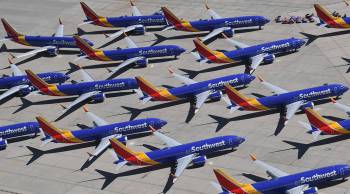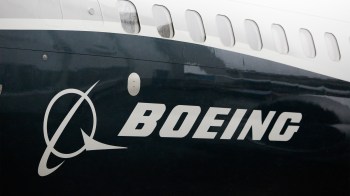New safety guidelines for Boeing’s new 787
TEXT OF STORY
Kai Ryssdal: Boeing’s new plane, the 787, is called the Dreamliner. But you’ve got to wonder, right about now, whether the company maybe wishes it had named the plane something else. Because with all its extra costs, the design problems and the delays, about the only dream left is that someday the plane might actually make somebody some money. The latest setback? The Federal Aviation Administration has issued some preliminary rules for how far other planes will need to fly behind Boeing’s new jets to stay safe. At least initially, those other planes are going to have to keep their distance.
Marketplace’s Mitchell Hartman explains.
Mitchell Hartman: When Boeing’s Dreamliner took its first test flight in Seattle last year, there were cheers all around. But the ultra fuel-efficient plane’s already three years late. And the FAA’s new safety rules are another setback.
According to the Wall Street Journal, other aircraft will have to stay at least 10 miles behind the Dreamliner during landing. That’s twice as far as for Boeing’s current planes.
The reason is something called “wake turbulence.” Imagine a cone of spinning air spiraling out behind a jet’s wing tips. Bigger planes need more room behind them for safety. But airline analyst Darryl Jenkins doesn’t think that’ll cause bottlenecks at busy airports.
Darryl Jenkins: Look at JFK — you have big planes and regional jets and turboprops on the runway at the same time, and controllers have an enormous amount of experience in spacing planes.
Aviation expert Curt Grimm at the University of Maryland says government officials are being overly cautious.
Curt Grimm: And I think they’re responding to public sentiment that regulators may have been a little lax, whether it’s drilling for oil offshore, whether it’s financial regulation, whether it’s transportation safety.
The FAA says it might ease up on the new safety rules once the planes have been tested in flight next year.
I’m Mitchell Hartman for Marketplace.
There’s a lot happening in the world. Through it all, Marketplace is here for you.
You rely on Marketplace to break down the world’s events and tell you how it affects you in a fact-based, approachable way. We rely on your financial support to keep making that possible.
Your donation today powers the independent journalism that you rely on. For just $5/month, you can help sustain Marketplace so we can keep reporting on the things that matter to you.


















